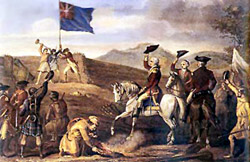 Indian Battles have gone down in the annals of history and remembered because of the valour and courage that was displayed. The Kalinga War is an ancient battle was fought between the Mauryan Empire under Ashoka and the state of Kalinga. Battles in the medieval period include the First Battle of Tarain fought in 1191 between Muhammad of Ghor against the armies of Prithviraj III. The Second Battle of Tarain was fought in 1192 between the same rulers. The most memorable of all battles is the First Battle of Panipat in 1526, which led to the establishment of the Mughal Empire in India Indian Battles. The battle was fought between Babur and Ibrahim Lodhi. The Second Battle of Panipat was fought in 1556 by Akbar, which also signalled the beginning of Akbar`s reign. The Battle of Haldighati was fought in 1576 between Maharana Pratap Singh of Mewar and Mughal emperor Akbar of Delhi.
Indian Battles have gone down in the annals of history and remembered because of the valour and courage that was displayed. The Kalinga War is an ancient battle was fought between the Mauryan Empire under Ashoka and the state of Kalinga. Battles in the medieval period include the First Battle of Tarain fought in 1191 between Muhammad of Ghor against the armies of Prithviraj III. The Second Battle of Tarain was fought in 1192 between the same rulers. The most memorable of all battles is the First Battle of Panipat in 1526, which led to the establishment of the Mughal Empire in India Indian Battles. The battle was fought between Babur and Ibrahim Lodhi. The Second Battle of Panipat was fought in 1556 by Akbar, which also signalled the beginning of Akbar`s reign. The Battle of Haldighati was fought in 1576 between Maharana Pratap Singh of Mewar and Mughal emperor Akbar of Delhi.
The Kalinga War was a war that was fought between the Mauryan Empire under Ashoka the Great and the state of Kalinga. It is believed that the bloodshed of this war prompted Ashoka to adopt Buddhism.
The modern Indian battles were the battles fought between the European invaders and the Indian rulers. These were the Third battle of Panipat of 1761 by the Marathas supported by the French on one side and the Afghans on the other side. The Battle of Buxar of 1764 was fought between the British East India Company on one side and the combined armies of Mir Kasim, Suja-ud -Daulah and Shah Alam II on the other side. The First Anglo Sikh War was fought between 1845-46 between the Sikhs and the British East India Company and the Second Anglo Sikh War was fought between 1848 and 1849 between the same parties. The Battle of Plassey of 1756 finally established the British rule in India. The First Anglo Maratha War from 1775 to 1782 was fought between the British East India Company and the Maratha Empire.
Important Battles in Indian History
| 261B.C. | Ashoka defeated Kalinga in the Kalinga War |
| A.D. | |
| 712 | Sind was invaded by Mohammed-bin-Qasim |
| 1191 | First Battle of Tarain took place in which Mohammed Ghori was defeated by Prithviraj Chauhan. |
| 1192 | Second Battle of Tarain took place in which Mohammed Ghori defeated Prithviraj Chauhan. |
| 1194 | Battle of Chhandwar in which Jaichand was defeated by Mohd.Ghori. |
| 1526 | First Battle of Panipat in which Ibrahim Lodhi was defeated by Babar. |
| 1527 | Battle of Khanua took place in which Rana Sanga was defeated by Babar. |
| 1529 | Battle of Ghaghara took place in which Babar defeated the Afghans. |
| 1539 | Battle of Chausa took place in which Humayun defeated by Sher Shah Suri. |
| 1540 | Battle of Kannauj in which Sher Shah Suri defeated Humayun. |
| 1556 | Second Battle of Panipat took place in which Bairam Khan defeated Hemu. |
| 1565 | Battle of Talikota in which the Vijaynagar was defeated by an alliance of Ahmednagar, Bijapur, Golkonda and Bidar. |
| 1576 | Battle of Haldighati in which Emperor Akbar defeated Maharana Pratap. |
| 1658 | Battle of Dharmatt and Samugarh in which Emperor Aurangzeb had defeated Dara Shikoh. |
| 1665 | Shivaji was defeated by Raja Jai Singh. |
| 1737 | Battle of Bhopal took place in which Baji Rao defeated Mohammed Shah. |
| 1739 | Battle of Karnal took place Mohammed Shah was defeated by Nadir Shah. |
| 1757 | Battle of Plassey in which the British defeated Siraj-ud-daula who was the Nawab of Bengal. |
| 1761 | Third Battle of Panipat took place in which Ahmed Shah Abdali defeated the Marathas. |
| 1764 | Battle of Buxar in which the English defeated the alliance of Nawab Mir Qasim of Bengal, Nawab Shuja-ud-daula of Awadh and Mughal emperor Shah Alam. |
| 1767-69 | First Anglo Mysore War in which the British were defeated by Hyder Ali. |
| 1766-69 | First Anglo Maratha War in which the British forces were defeated. |
| 1780-84 | Second Anglo Mysore War. Hyder Ali died and his son Tipu Sultan took over. The war concluded with the Treaty of Mangalore that was signed in1784. |
| 1789-92 | Third Anglo Mysore War in which Tipu Sultan was defeated. |
| 1799 | Fourth Anglo Mysore War in which Tipu was killed. |
| 1803-06 | Second Anglo Maratha War in which the Marathas were defeated by the British. |
| 1817-19 | Third Anglo Maratha War in which the British again defeated the Marathas. |
| 1845-46 | First Anglo Sikh War in which the Sikhs were defeated. |
| 1848-49 | Second Anglo Sikh War in which the Sikhs were defeated. Punjab was annexed by the British. |



















